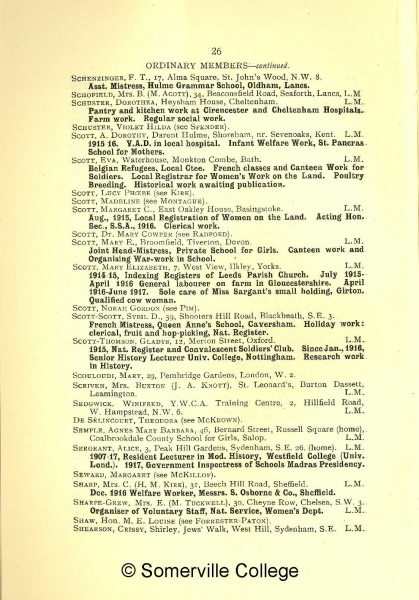Amongst the six students to leave Somerville for war work in June 1915 was Helen Norah Hughes. She had entered the College in October 1914 to read English and was a friend of Vera Brittain’s, but rather than nurse, she became a Checker of Forage for the War Office, one of several Somervillians to work in agriculture.
The first harvest of the war revealed a crisis developing in farming. Over 100,000 agricultural workers had joined the armed forces during the first six months of the war and the British Army depended on farmers for a regular, reliable supply of forage (fodder) to feed the horses which were still its main means of transport. Farmers were unable to produce enough food for human consumption and haymaking was not a priority therefore, in July 1915, the first women were enrolled by the War Office to organise the collection and transportation of hay from farms to the front and, in agriculture more widely, women volunteers began to make up the shortfall in the workforce.
Food production was of paramount importance and organisations such as the Women’s Farm and Garden Union worked to train women in agriculture and overcome bias against them. At a domestic level, the Women’s Institute was founded in 1915 to promote the production and preservation of food and individuals cultivated allotments and gardens. The Somerville College report for 1915 listed two former students who took up agriculture – Mary Scott became a farm labourer and Margaret Moor an assistant ‘cowman’ – whilst helping on the land became a popular form of war work for students in the long vacations.
In March 1917, the Women’s Land Army (WLA) was formed. It encompassed agricultural workers, a forestry section and the Women’s Forage Corps (WFC). The disparate women forage workers were incorporated into the new Corps, the members placed into teams of six, travelling from farm to farm, where they would harvest and bale the hay and drive it to the local station by horse-drawn cart for transfer onto a train. Somervillians, by this stage of the war, were working in agriculture at all levels, including administration on regional committees, large scale food production such as potato and chicken farming and small scale gardening to supply individual hospitals and refugee hostels with vegetables. Mary Scott worked on the land throughout the war, ran a small holding and became a qualified cow woman and Somerville students spent their vacations harvesting or fruit picking. Former Chemistry tutor, Margaret McKillop, went from lecturing on food economy in 1915 to working for the Ministry of Food in its Information and Statistics Section and wrote Food Values, What They Are and How to Calculate Them, published in 1916.

